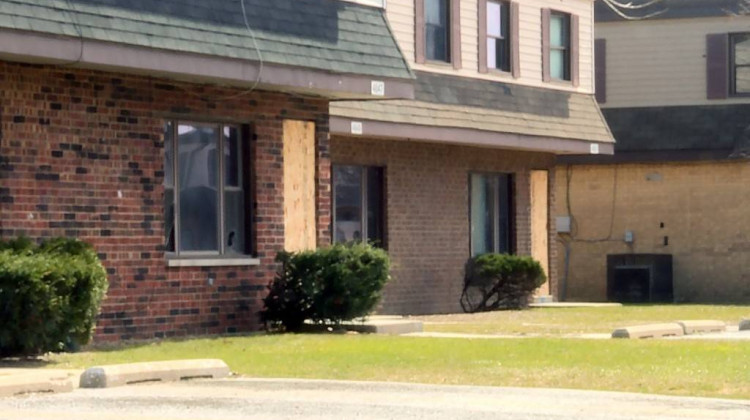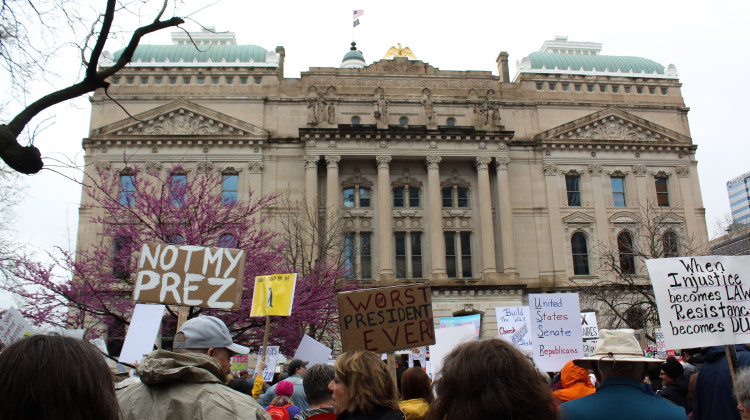
Residents were displaced in East Chicago, Indiana after high levels of lead were found in the soil.
Lauren Chapman / IPB NewsA new analysis examines how pressing environmental issues can impact housing throughout the state. One key finding is that historic policies such as redlining continue to haunt minority communities in Indiana.
The report, from the Fair Housing Center of Central Indiana, or FHCCI, looked at environmental concerns that neighborhoods are currently facing including extreme heat, flooding and air pollution.
Researchers say groups most subject to discrimination under fair housing laws are more likely to feel environmental impacts.
Brady Ripperger, deputy director of administration and advocacy with the FHCCI, said some areas most impacted by environmental change in Indiana are in formerly redlined neighborhoods.
“Minority communities are the ones that we find generally are forced into communities that are located next to Superfund sites or brownfield sites, polluted areas or areas that were previously dumping grounds,” Ripperger said.
Superfund sites are federally recognized areas that are in need of environmental remediation. Indiana has 54 such sites but only 20 have been cleaned up.
The report found that brownfields — former industrial sites that were never cleaned up — are disproportionately nearer to low-income housing.
The analysis also found that in Indianapolis a majority of formerly redlined neighborhoods lack tree coverage, which plays a role in reducing heat risk in neighborhoods.
Ripperger said the environment is directly related to housing stock, much of which is aging in Indiana.
“We are already in a housing crisis, especially an affordable housing crisis right now,” he said. “So this is an issue that needs to be the top priority for every single environmental discussion that we have.”
The report digs into other environmental hazards including lead exposure, flood risk and air quality.
Ripperger says policy change, better access to testing for contaminants and expanding free legal services for residents could help combat environmental disparities in housing.
Correction: The photo caption in this story originally said residents were displaced in Gary, Indiana – residents were displaced in East Chicago, Indiana.
Contact WFYI Morning Edition newscaster and reporter Abriana Herron at aherron@wfyi.org.
 DONATE
DONATE






 Support WFYI. We can't do it without you.
Support WFYI. We can't do it without you.